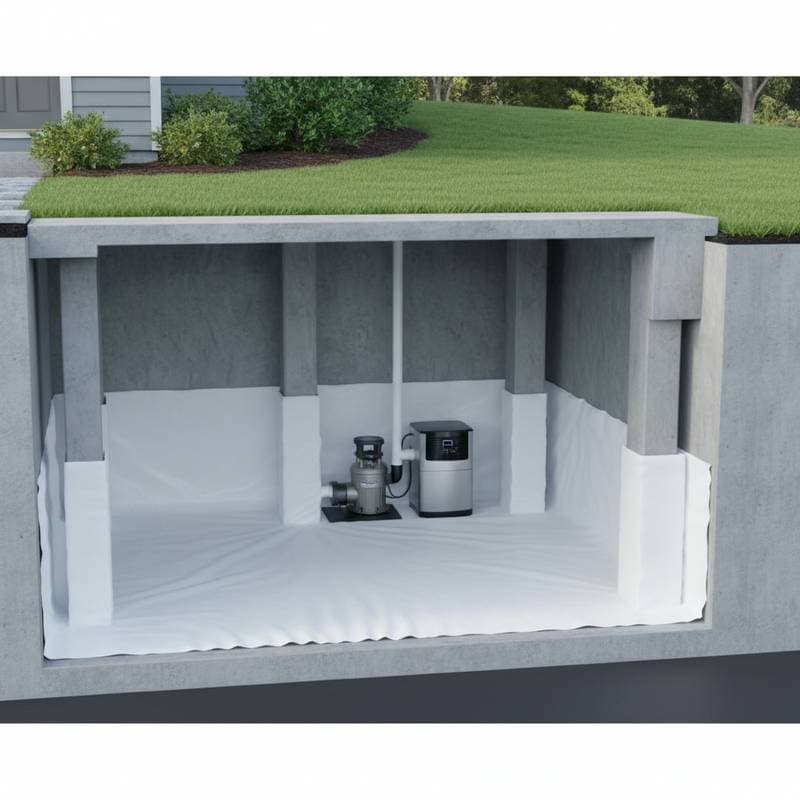
Cost Guides
View All →LVP Flooring Now $4.50 Per Foot After 25% Drop
Multigenerational Home Renovation Costs in 2025
Granny Flat ADUs Cost $180K-$350K in 2025
Hidden Solar Maintenance Costs That Drain Your Savings
Septic Replacement Costs: What Drives State Pricing
Real Costs of Adding Family Living Space in 2025
Home Guides
View All →AI HVAC Systems Cost $6,500-$18,000 Installed
Prevent Crawl Space Water Before Foundation Damage Starts
Why Families Are Sharing Homes to Cut Housing Costs
Home Water Filtration Systems Cost $900-$4,200 in 2025
Home Office Permits Cost $500-$6,000 in 2025
Flood Proofing Your Policy Likely Overlooks
Recent Articles
Home Warranties Cover Solar Inverters, Not Panels
In 2025, home warranties often include solar inverters and related wiring, yet exclude the panels themselves. Grasping the distinctions between home warranties, manufacturer protections, and homeowner insurance enables homeowners to sidestep unexpected expenses. This guide details coverage specifics, average costs, upkeep strategies, and professional intervention points to safeguard solar setups.
Laundry Remodels Return Up to 75% at Resale
Elevate your laundry room with targeted 2025 upgrades that deliver up to 75% resale return. This guide covers efficient layouts, energy-saving appliances, smart technology, and practical storage solutions, including costs, timelines, and strategies for DIY or professional execution to maximize comfort, safety, and market appeal.
Hidden Solar Maintenance Costs That Drain Your Savings
While solar panels deliver impressive bill reductions, 2025's escalating maintenance demands often catch owners off guard. From routine cleanings to costly inverter swaps, proactive care upholds efficiency and warranty protections.
Septic Replacement Costs: What Drives State Pricing
Septic replacement expenses in 2025 fluctuate by state due to soil variations, rules, and workforce costs. This resource details cost components, regional averages, overlooked charges, and funding strategies. Gain insights on contractor selection, contract pitfalls, and investment safeguards via informed planning.
Why Kitchen Islands Now Cost as Much as Cabinets
In 2025, kitchen islands rival cabinetry in expense due to surging material costs, skilled labor demands, and bespoke features like integrated sinks and appliances. This guide breaks down the drivers and offers strategies to optimize your remodel for performance and affordability.
Solar Maintenance Costs More Than You Think in 2025
While solar panels deliver years of renewable energy, 2025 maintenance demands reveal unexpected costs for homeowners. This overview covers essential inspections, cleanings, inverter issues, and warranty details, plus tips on DIY versus professional care to optimize efficiency and protect your investment.
Hidden Fees That Drain Your Home Warranty Value
Home warranties offer protection for major repairs, yet concealed charges frequently erode their value. Service fees, code upgrades, and refrigerant costs can significantly increase expenses.
Why Home Warranties Don't Cover Your Solar Panels
Homeowners often believe home warranties protect solar panels, yet most policies leave significant gaps in coverage.
Real Costs of Adding Family Living Space in 2025
Multigenerational home expansions in 2025 demand careful attention to costs, codes, and comfort. This guide covers expenses for options like basement conversions and ADUs, plus timelines and essential safety steps to create functional, future-proof living areas.
Hidden Expenses Behind Home Office Renovations
Converting a room into a home office promises better focus and efficiency, yet it often brings unexpected costs beyond basic furnishings.
Why Outdoor Kitchen Costs Surge in 2025
Outdoor kitchen expenses are increasing in 2025 due to supply chain issues, regulatory changes, and demand for premium features. Projects range from $8,000 for basic setups to $45,000 for elaborate designs, influenced by materials, utilities, and site conditions. This guide explains the key drivers, offers budgeting strategies, and compares DIY versus professional installation options.
Solar Warranties Don't Cover What You Think They Do
Solar warranties offer promises but often leave maintenance risks uncovered. This 2025 analysis details home warranty benefits, cost breakdowns, exclusions, provider tips, and strategies to avoid errors while maximizing your solar returns.





















